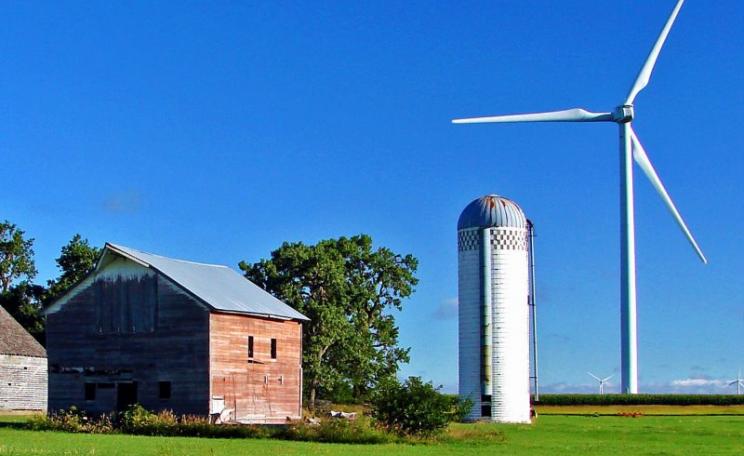Even in its most optimistic scenario, the IEA projects the future level of development of renewable energy to be far below today's rates. In this way, the IEA misleads the public about the real potential of solar and wind energy.
The International Energy Agency is calling for substantial new investments in fossil fuels, in particular oil and gas, in its latest flagship World Energy Outlook (WEO) report.
The backing to fossil fuels undermines the agency's superficailly positive messages on climate protection and renewable energy, an analysis by the Energy Watch Group shows.
World Energy Outlook 2016, which was presented today in Berlin, calls for increased investment in oil and gas, citing the fact that new oil discoveries are at their lowest level in more than 60 years in this time of low oil prices.
The International Energy Agency (IEA) thereby flies against simple market logic: current production is high compared to demand, thanks to static global oil consumption combined with huge new production of unconventional oil from North American shale and tar sands.
Major new oil fields awaiting development almost entirely lie in areas of very high cost exploration and production only justified by long term oil prices of over $100 per barrel: in the Arctic, for example, or in deep ocean waters. These are completely uneconomic at current prices of under $50.
Moreover investors are scared off these long-payback projects given the sharply reduced fossil fuel production scenarios necessary to deliver the targets set out in the Paris Agreement.
Coincidentally OPEC today announced a reduction of oil production of 1.2 million barrels per day by its member states, led by Saudi Arabia, in an effort to push up prices. Oil futures markets rose on the news, however increased production by non-OPEC members like the the US and Canada, both all operating well below capacity, are likely to subvert the intended result.
IEA assumes that renewable energy development will slow down
Moreover, higher oil prices are looking unsustainable in the medium and long term as continuing price falls in the renewable energy sector, of solar and wind power in particular, challenge the medium- and long-term competitiveness of oil and gas.
"By calling for increased investments in oil, the IEA undermines climate protection efforts and threatens the global energy security", says President of the Energy Watch Group and former member of the German Parliament Hans-Josef Fell. "Only a rapid development of renewable energies can close the emerging energy supply gap. Oil investments are not able to do so."
"Even in its most optimistic scenario, the IEA projects the future level of development of renewable energies to be far below today's rates. In this way, the IEA misleads the public about the real potential of solar and wind energy as well as e-mobility." Even if oil prices were to rise again, he added, "future oil production will not stay at today's level, simply because of the limited availability."
Even in its most optimistic scenario, the IEA projects the future level of development of renewable energy to be far below today's rates. In this way, the IEA misleads the public about the real potential of solar and wind energy.
While the IEA makes positive public statements on renewable energy, the Energy Watch analysis reveals that WEO2016 assumes a slower pace of renewable energy development than has already been achieved over the last eight years.
Even the report's most ambitious '450 Scenario' assumes that the net added capacity of new solar PV and wind power plants will peak in 2030. However the IEA fails to explain why the installation of new solar and wind plants should decrease in the face of their continuously falling prices and growing global energy demand.
"A decrease in net added capacities stands in stark contrast to projections by leading international market observers", says Christian Breyer, Professor of Solar Economy at the Lappeenranta University of Technology in Finland and Chairman of the Scientific Board at Energy Watch Group.
"Assuming a slow market penetration of wind power and solar PV also contradicts the dynamic of the global energy transition in the last ten years." Furthermore, he adds, the IEA seems to ignore the new global dynamic created by the Paris Agreement.
'New Policies Scenario' stuck in the distant past
The report's 'New Policies Scenario' (NPS) even projects that the costs for solar photovoltaic power plants in India will be $800 per kilowatt of capacity in 2040 - a cost higher than prices actually paid right now in 2016. The Government of India estimates the current costs for solar PV-plants at $710 per kilowatt.
In addition, the IEA severely underestimates the potential of electric vehicles to transform the transport sector. This is illustrated by the IEA's assumption that 80% of transport will still be dependent on fossil oil in 2040, even as China embarks on a massive expansion in production of cheap electric cars.
The NPS Scenario also suggests a net increase in nuclear capacity of 65 GW, while the 450 Scenario anticipates some 160 GW of new nuclear. The projected construction of 131 new reactors assumed by 2025 suggests that in the coming 8 to 9 years more than double the 60 reactors currently under construction will be built.
This assumption contradicts the experiences of the recent decade, with a globally declining nuclear industry characterised by cost overruns, long delays, financing difficulties an serious techninal difficulties that have yet to be overcome with most current reactor designs.
The IEA assumes that Europe's gas imports from Russia in 2040 will stay on today's level, and projects that Russia will increase its gas production by 20% by 2040. This assumption neglects the fact that gas production in Russia, especially by the major producer Gazprom, is sharply decreasing. In 2015, Gazprom recorded a production of 419 billion cubic metres, the same lowest level as in 1985.
Investors following IEA call are onto a certain loser
The IEA also assumes an increase in coal consumption up until 2040 in all except the 450 Scenario, which projects a 50% drop in coal consumption. Yet the 10% drop in coal production in China in 2016, as well as the loss of market value by many western coal companies, suggests a significantly greater reduction of coal consumption.
"It is long overdue that the IEA changes the status of the 450 Scenario into the NPS Scenario, especially in light of the current Chinese coal policies and the internationally binding Paris Agreement", says Werner Zittel, Senior Energy Expert at the Ludwig-Bölkow-Systemtechnik and Chairman of the Scientific Board at Energy Watch Group.
In 2015, a series of studies by Energy Watch and the Lappeenranta University of Technology showed that the IEA continuously published misleading projections on solar and wind energy in its World Energy Outlook series.
As for the potential of renewable electricity to compete directly with fossil oil and gas, the IEA is looking firmly the other way. Solar energy installation contracts in prime locations like Chile and UAE are already just cents for kWh, and falling.
Within a decade or so it will be possible to use that 'almost free' power to electrolyse water into hydrogen and oxygen, then convert the hydrogen into gas and liquid fuels like ammonia, methane, ethanol and isobutanol at costs equivalent to $10 - $20 per barrel of oil.
And when that happens, investors in all but the lowest cost oil and gas production will find they are losing money hand over fist, before even counting in any carbon price.
Oliver Tickell is contributing editor at The Ecologist.







